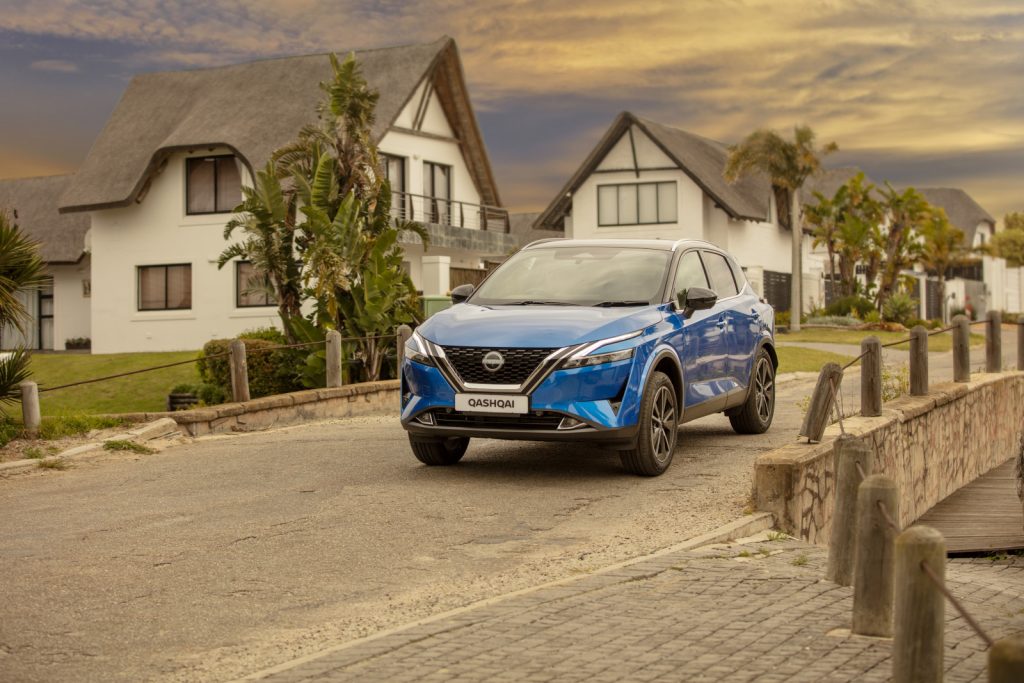The Nissan Qashqai has consistently been at the frontlines of crossover adaptation. Thank the first-generation model because, in large part, it convinced buyers that traditional car-like comfort could be had with good visibility, plenty of space and modest running costs.
Saying that it was a pioneer for the crossover segment isn’t just lip service, it’s a fact and, despite some early growing pains, buyers were rushing to get in on the crossover lifestyle. Many mainstream car makers were sitting back, assessing just what the local appetite for crossovers was like and missed out on valuable sales.
Then, after the success of the J10 (gen-1), Nissan launched the second generation bearing the difficult-to-pronounce nameplate and from what I recall testing the J11, it left a lot to be desired. Unlike its predecessor, I didn’t think of it as something that moved the crossover game forwards.
Cue the J12, also known as the latest Qashqai, and I think it’s safe to say that it’s back to form for the nameplate. Just on looks alone, it’s a striking balance of geometrically pleasing front and rear lights, creases and folds that seem to serve more of a purpose than being on trend. Since styling is such a highly subjective and contentious topic of discussion, I’ll leave the stylistic judgment to you.
I can tell you, though, that the wheelbase is 20mm longer than the outgoing model, while the overall length is extended by 35mm. It’s also a tad taller, adding 25mm of height.
On the inside
The result is present inside the Qashqai, with the increased dimensions going a long way towards giving a roomier cabin than the exterior would suggest. When you are seated inside the quilted Nappa leather seats, the Qashqai gives a commanding view of the road — a selling point that made the original a hit during the crossover segment’s infancy.
Our overall impression of the cabin is that it’s a quality, well-put-together interior with a fair few nice-to-have modern touches such as ambient lighting. It’s also easy to navigate and understand with a ratio of digital-to-haptic that is just right.
The traditional instrument binnacle has made way for a 12.3-inch configurable TFT screen that provides crucial information in a crisp resolution. The nine-inch centre infotainment screen performs the heavy lifting on the multimedia side with seamless Android Auto connection during our week-long stint with the Qashqai. This is something we no longer take for granted because the ongoing technological push frequently means regular electronic hiccups on this front.
We also appreciate that, despite the tech-forward execution of the new Qashqai, Nissan has opted for a more traditional approach towards cooling and heating the cabin with easy-to-use air-con controls, no screens and no menus.
Driving
Under the sleek bonnet lives a 1.3‑litre turbocharged engine that produces 110kW and 250Nm of torque. It’s mated to what Nissan calls its Xtronic Automated Transmission — a clever way of selling a continuously variable transmissoin (CVT) to unsuspecting buyers.
But don’t press the return button just yet. It goes against every fibre of my being when I say this, but, like only a handful of car manufacturers before, Nissan has cracked the code of how not to make it a miserable driving experience. In fact, for the most part, it’s really quite pleasant.
Keep it dialled into its “Normal” driving mode, and you’ll have to pay attention to catch any whiff of CVT characteristics such as the dreaded “rubber-band effect” or sluggish and noisy changeovers. It’s crisp for the most part, responsive in its upshifts and even relatively quiet. Dare to switch it into “Sport” mode, though, and like some cruelly ironic plot twist, all bets are off.
It’s also mighty comfortable traversing the roads, despite the 19-inch standard-issue wheels. And speaking of comfort, the adaptive cruise control and lane-keep assist combination that forms part of Nissan’s ProPilot autonomous drive technology helps reduce the workload during highway driving as it constantly adapts to changing conditions.
I might be picking nits here, but I couldn’t wholeheartedly trust the steering assist because it subtly, but continuously, wove off-centre from the lane. I can appreciate that Nissan is implementing these measures in its mass sellers but it must be said that some manufacturers managed to make this feature a seamless operation half a decade ago already. Still, it does what it’s supposed to.
Owning
Here it gets a bit tricky … Instead of a value-first sensible proposition, an area where Nissan’s carved out a comfortable market share in the past, the R670 600 asking price of the Nissan Qashqai 1.3T Acenta Plus places it in the middle echelons of premium crossover ownership.
For similar pricing, middle-range offerings from Volvo’s XC40 and Audi Q3 also become viable contenders.
It’s also a smidge pricier than VW’s 2.0TSI T-Roc R-Line, a brilliant crossover in its own right, with considerably more poke.
At least it’s fuel-efficient, with Nissan claiming it will only sip 6.1 litres per 100km.
While I didn’t quite get the same returns at a test average of 7.2, it must be said that it was hardly under ideal conditions — and I also didn’t try particularly hard.
Summary
If the price was right, I believe the Nissan Qashqai 1.3T Acenta Plus would have been an easy sell on merit. Look, it’s easy for me to comment, given all the elements that influence a car’s pricing but, on the other hand, it’s also people like me who are in the market for a crossover, whether as an upgrade on a previous gen Qashqai or upgrading into this segment.
Ultimately, the ZAR has the same value for me as the people shopping here. Justifying a price tag that’s on par with the mid-range and sprightlier Kia Sportage, the brilliant Hyundai Tucson or R100k more than something from the Chinese corner — all cars with similar specs — is a big ask.
The Qashqai is an incredibly competent and feature-rich crossover but it is somewhat let down by its price.



